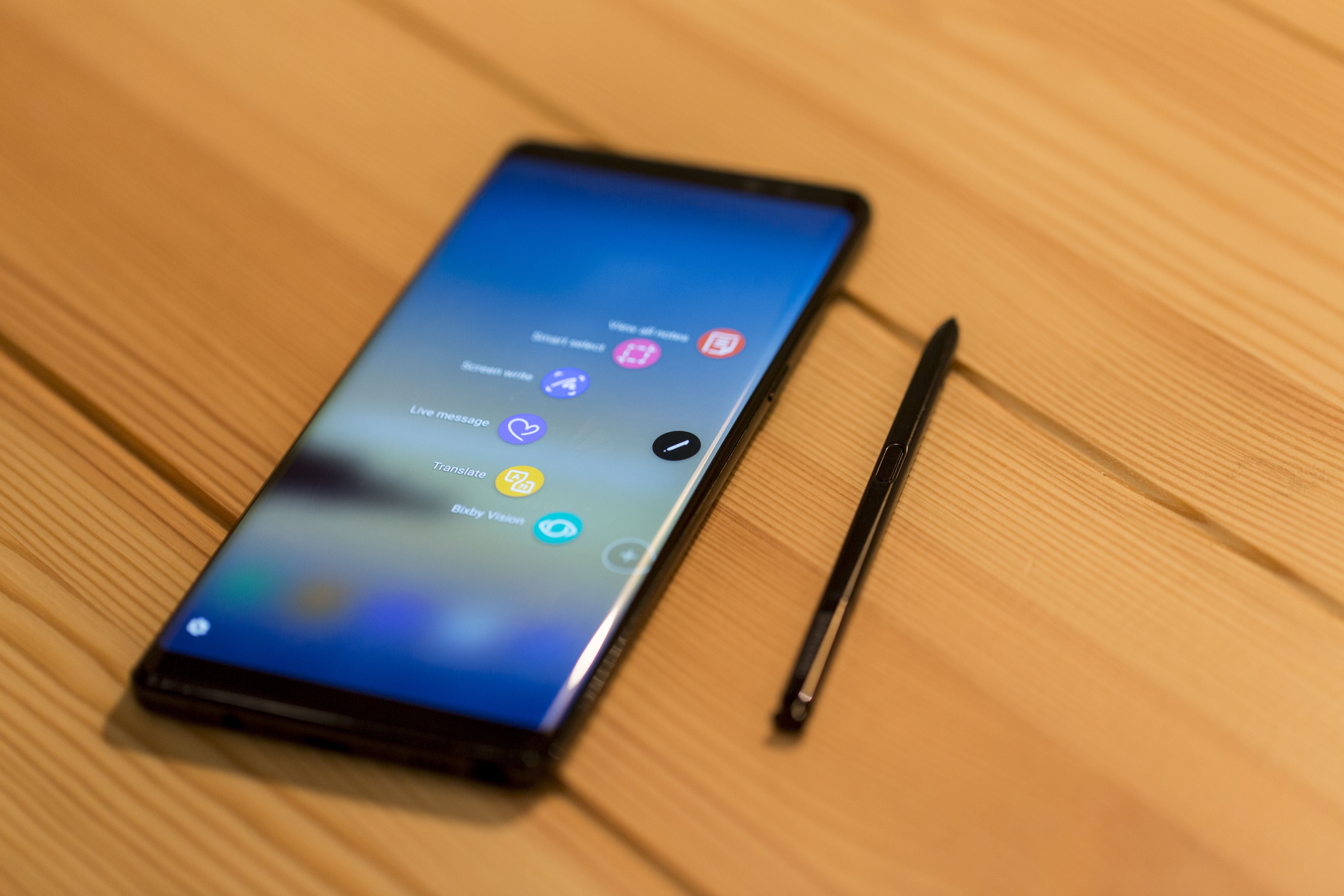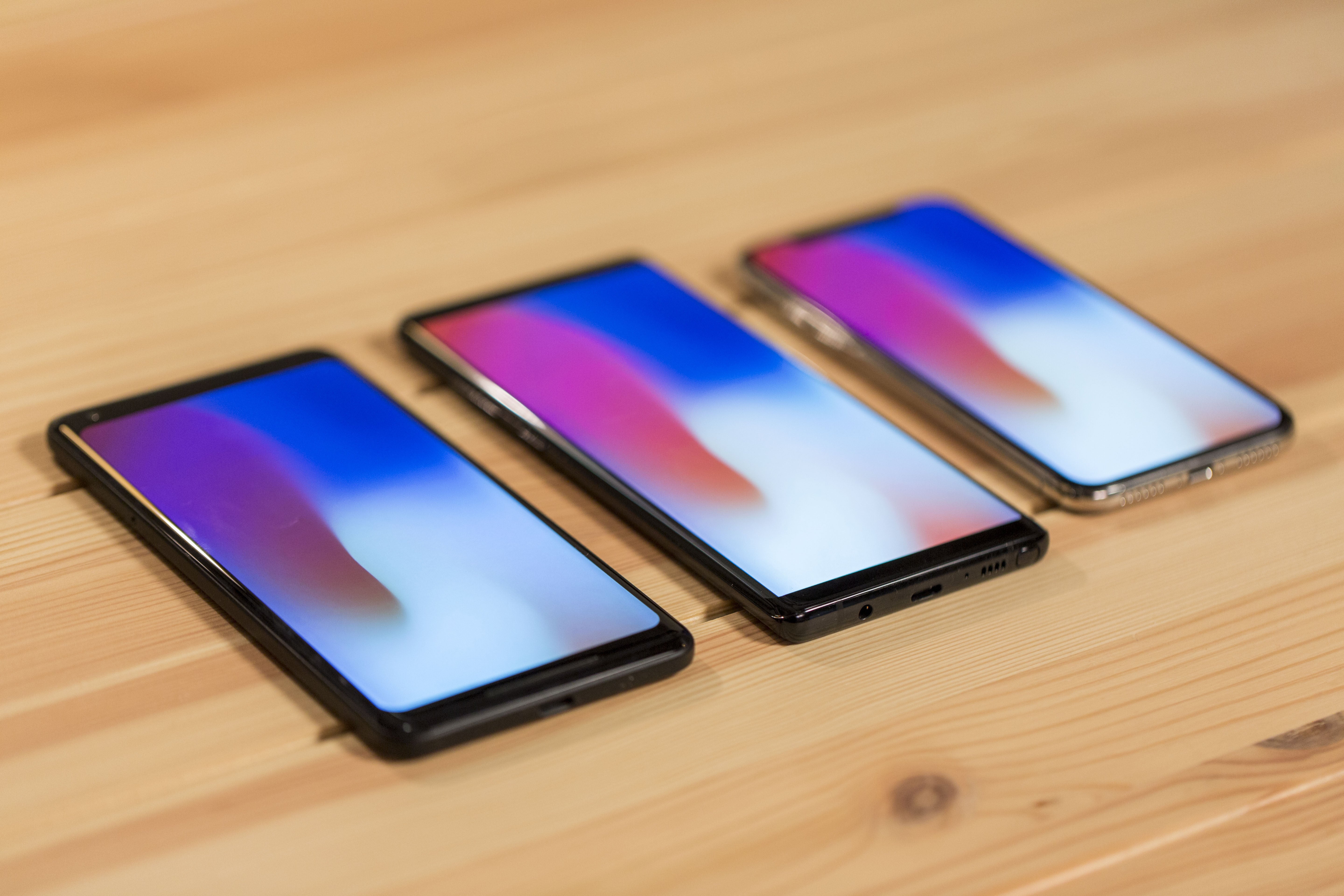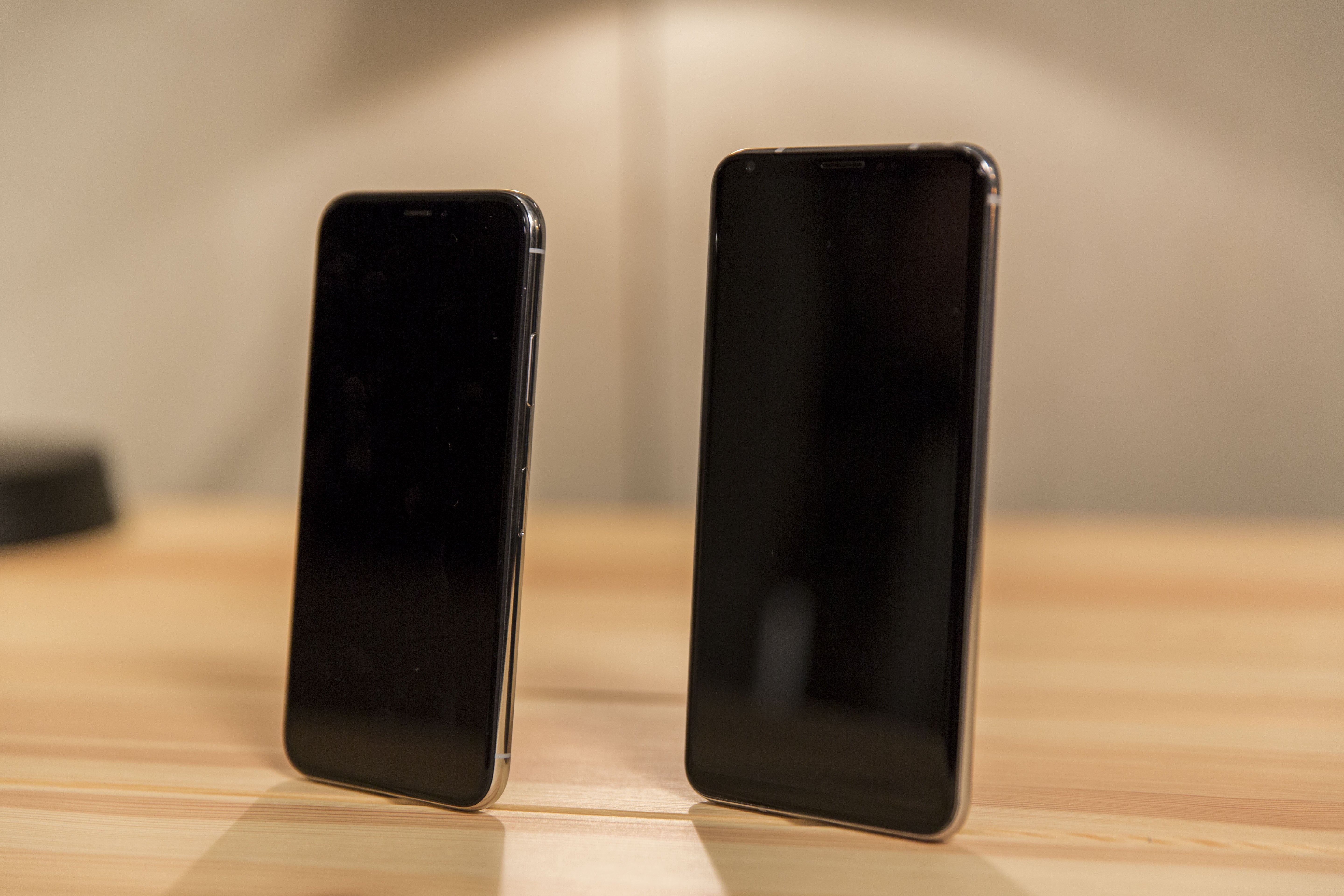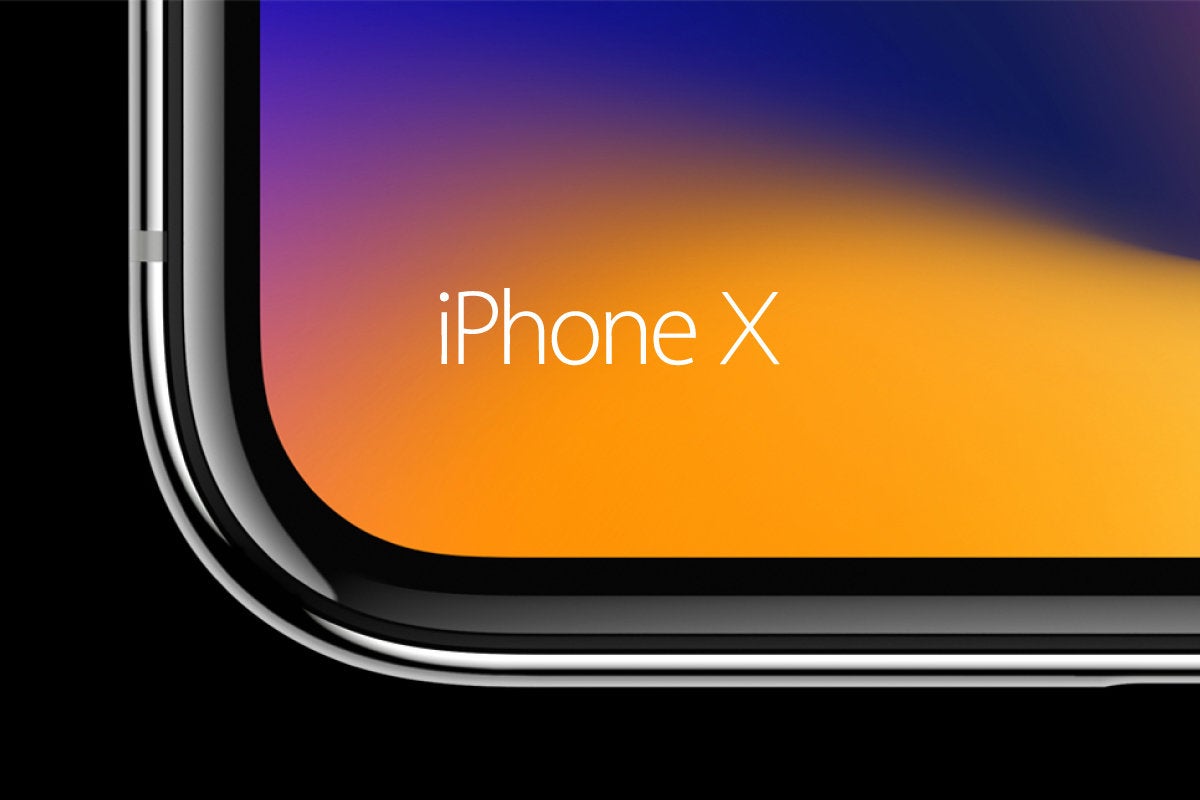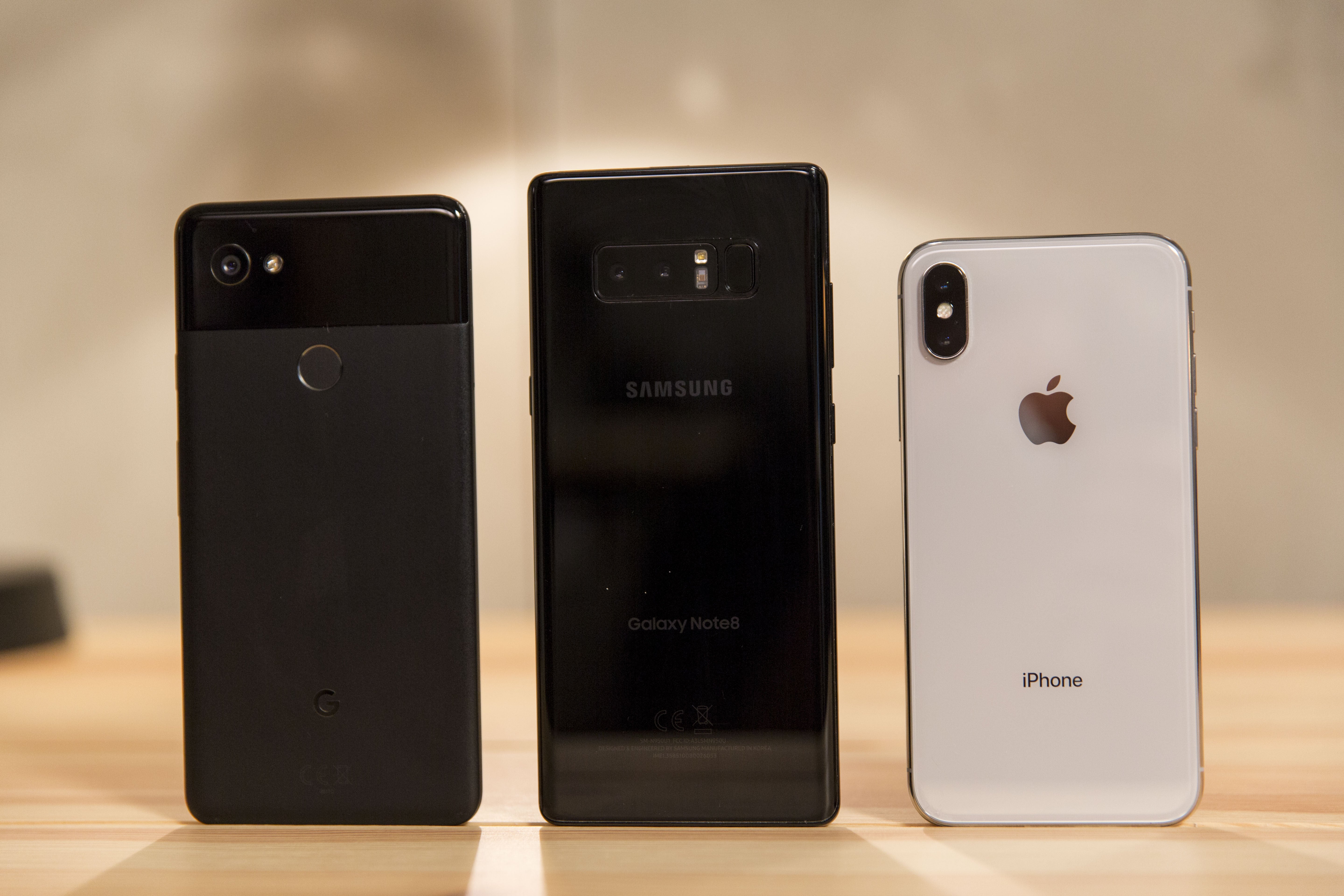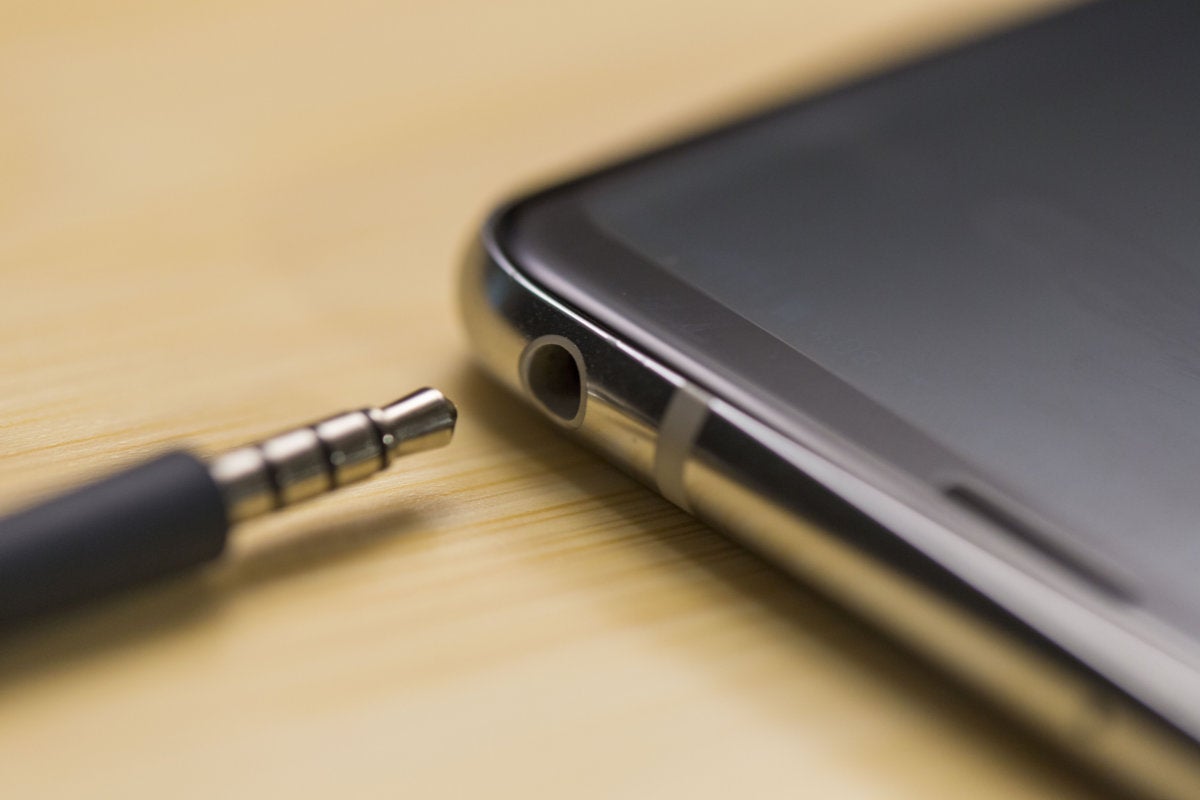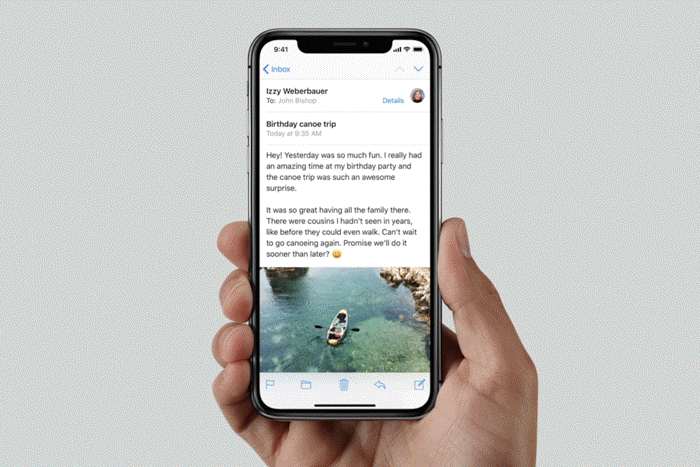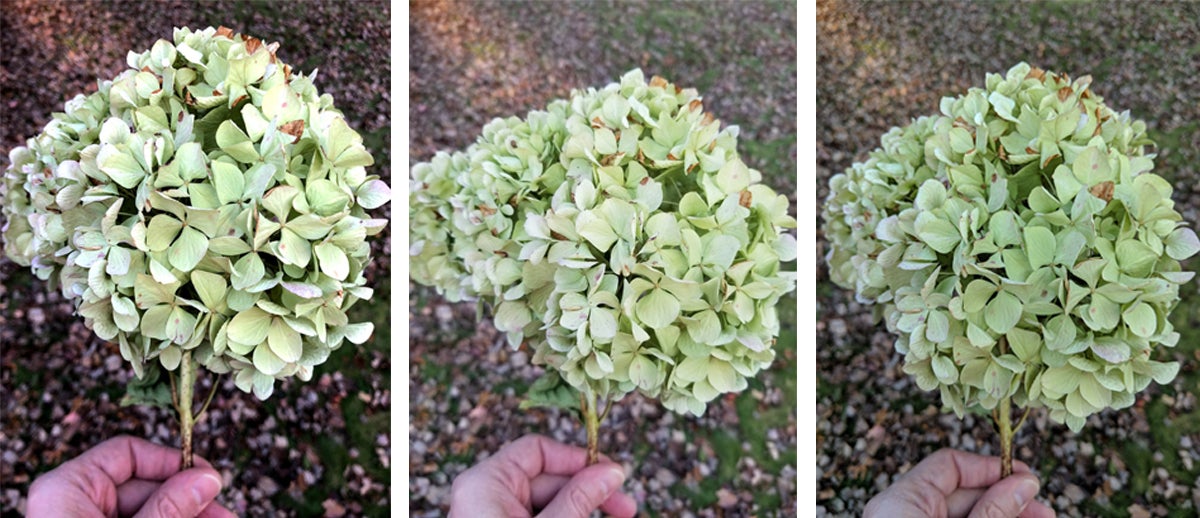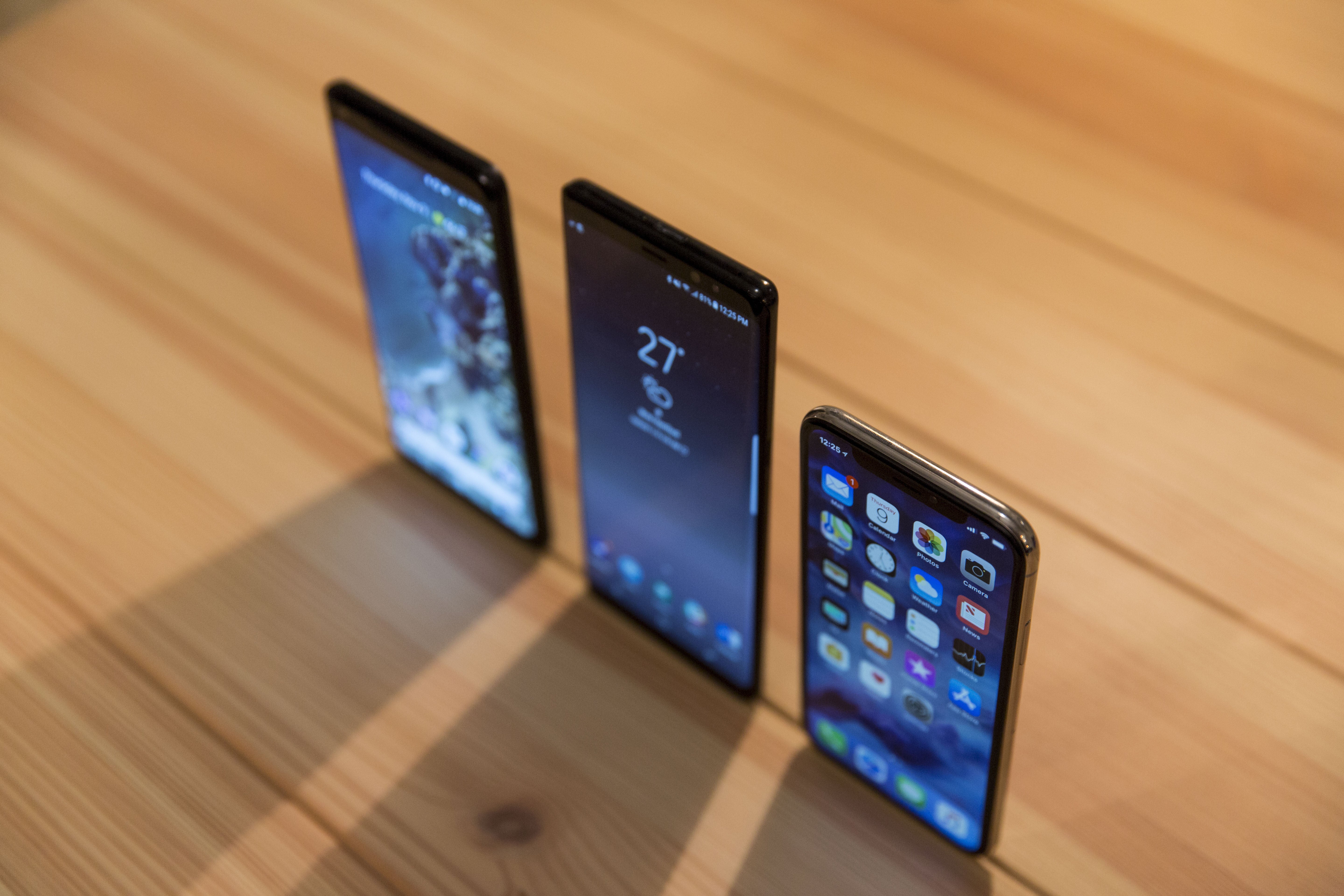iPhone X versus Android’s best: A surprisingly lopsided affair
Table of Contents
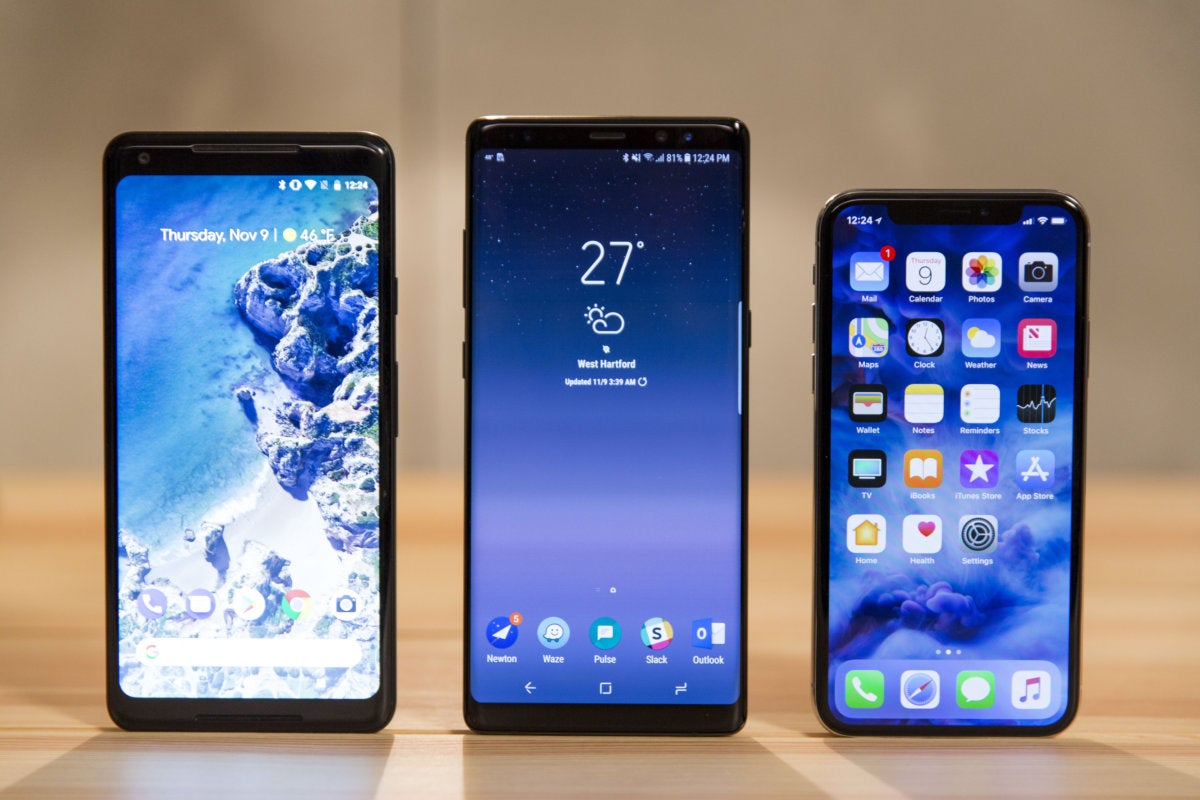
Apple shows Android how OLED is done.
The Galaxy Note 8 is an incredible phone. Back when I reviewed it for PCWorld I gave it the highest possible score and raved about its display, still the greatest I’ve seen in Android phone. The dual camera delivered impressive portraits and lush landscapes, and the battery powered through the busiest of days. In short, it was the best phone I had ever used and I thought it would be a long while before anything topped it.
I was wrong. Apple’s iPhone X not only beats the Note 8, it practically makes it seem obsolete. I’ve tested a wide array of Android handsets over the past 12 months, and I can confidently say that none are in the same league as Apple’s newest handset. And only a couple come close.
The Galaxy Note 8 is an extraordinary phone, but iPhone X beats it in every category.
Quite frankly, it’s hard to even describe how much better iPhone X is without using it for a stretch of time, and most Android fans will never get that chance. That’s a shame. It wasn’t until I spent a day or two with iPhone X, going back and forth with the Note 8, Google Pixel 2 XL, and LG V30 that I could see just how much of a triumph it is.
Samsung might need its own Note X just to catch up.
iPhone X vs. Android: Display
Before we debate the benefits of the notch, let’s talk about the display. Yes, Apple is playing catch-up here. Android phones have been using OLED displays for years, and while Apple might have made the best smartphone LCDs in the business, they were still a notch below the superior color-handling and power efficiency of the best OLED phones from Samsung and Google.
So, I didn’t expect to be blown away by Apple’s first OLED. As I said, iPhone displays have always been superior, and I assumed iPhone X would be more of the same, a marginal improvement over iPhone 8’s already great True Tone screen and on par with what I saw with the Note 8.
That’s not the case. Apple has worked wonders with its Samsung-sourced OLED display for iPhone X. It’s accurate without being dull, bright without bring harsh. And while the Note 8’s screen is technically brighter based on my light meter tests, iPhone X is just as readable in direct sunlight. And with True Tone turned on, I don’t even have to manually increase the brightness.
Keep in mind this is out-of-the-box calibration. With Android phones, I generally spend a few minutes cycling through the various screen modes to find the most pleasing one. With iPhone X there aren’t any settings or switches to play with. While the Note 8’s quad HD 1440p display is again, technically superior to the iPhone X’s 1125p one, that advantage is neutralized by Apple’s tremendous calibration. Even if I could adjust the colors, I wouldn’t.
The Pixel 2 XL’s blueish screen (left) is much more obvious when compared to the Note 8 (center) and iPhone X (right).
And it puts the Pixel 2 XL and LG V30 to shame, both of which have LG-made displays. The V30‘s screen has similar issues as the Pixel 2 XL, which have been well documented, but they are amplified next to iPhone X. While my Pixel 2 XL test unit hasn’t exhibited any image retention, it does have a noticeable blue hue that overtakes every color, even at slight angles. But aside from that, there’s no denying the overall dullness of it. Even with the new boosted and saturated settings switched on, there’s still a general flatness to the display that’s hard to miss when compared to iPhone X. And little things I overlooked about the Note 8—particularly the smooth feel of gesture animations thanks to iPhone X’s 120Hz touch sample rate—became glaringly and distractingly obvious.
I do prefer the size of the other phones (particularly the 6.3-inch Note 8), and I’m hoping the rumors of a Plus size next year are true. Also, I very much miss the always-on display when using iPhone X, something that’s a staple on Android flagships. But to say that iPhone X has the best display I’ve ever used might actually be selling it short. It’s likely to be better than the ones in next year’s crop of Android phones too.
My pick: iPhone X
iPhone X vs. Android: Design
2017 has been something of a watershed year for smartphone design. While it was starting to seem as though we were approaching the limits of what could be done with glass rectangles (iPhone included), Samsung, LG, Essential and others pushed the envelope by dramatically trimming the bezels and tweaking the standard 16:9 screen ratio to make their phones easier to hold and use.
Apple follows that path with iPhone X but also manages to break new ground. Lying on a table, iPhone X looks a lot like LG’s V30, with a wraparound chrome edge sandwiched by two pieces of curved glass. But while the V30 and most other 18:9 Android flagships have slivers of glass above and below the screen, iPhone X is the first to truly go “all screen.” Now, you can quibble over that characterization since there is a healthy bezel going around the entire edge of the display, but the symmetry of the design does make it seem like you’re truly holding nothing more than a screen.
That’s not an iPhone X Plus. That’s just an LG V30 next to iPhone X.
Of all the Android phones, I prefer the Note 8’s boxy shape and overall aesthetic, but Apple’s design still wins out. I particularly appreciate the corners of the screen, which are perfectly rounded, unlike the V30’s rough edges and the Note 8’s somewhat beveled ones. The sloped edges of the Note 8’s Infinity Display might feel a touch more luxurious, but iPhone X is nothing less than a dramatic leap ahead in smartphone design and will no doubt spawn a slew of imitators.
The corners of iPhone X’s display are perfectly round, unlike the V30 and Note 8.
Which brings us to the notch. I’ll admit to being extremely skeptical of it based on photos I saw, but in reality it makes a lot of sense, if for no other reason than the aforementioned symmetry. The notch doesn’t upset the visual balance of the phone like a full strip of glass does, and it does a nice job of tucking the status bar out of the way without sacrificing precious pixels. When the status bar disappears, pictures elegantly fill every corner of the display, and developers are already experimenting with cool ways to use the “horns” to their advantage. The only time it’s distracting is in landscape mode, but even there, it’s worse in pictures than in practice.
The next race will be the one to deliver the first edge-to-edge phone without a notch, and I suspect Samsung or LG will beat Apple to the finish in that one. It might not be as functional as the home button, but the notch is going to be Apple’s new defining characteristic for the iPhone. And in an era where it’s getting harder and harder to tell flagship phones apart, the notch gives iPhone X an unmistakable identity.
My pick: iPhone X
iPhone X vs. Android: Battery
iPhone X’s battery is a smidgen bigger than the 2,691mAh cell that’s in the iPhone 8 Plus, but it’s still way smaller than the ones in its Android peers. To compare the specs, you’d think iPhone X is at a serious disadvantage here:
- iPhone X: 2,716mAh
- Note 8: 3,300mAh
- V30: 3,300mAh
- Pixel 2 XL: 3,520mAh
But numbers don’t tell the whole story. Case in point: The iPhone 8 Plus has a smaller battery than the iPhone 7 Plus (2,691mAh versus 2,900mAh), but there’s no noticeable dip in longevity. Granted, you’ll still need to charge it overnight, but it should be able to power though as long of a day as the 7 Plus. In short, Apple’s iOS efficiency and battery optimization lets it do a whole lot more with less.
And the same is true of iPhone X. Power users might want to keep a battery charger around, but the vast majority of people will be able to easily make it through a day of heavy use. iPhone X was mostly on par with the Note 8, but the Pixel 2 XL fared a bit better in all of my tests, as I assumed it would. For example, streaming a 1:40 HDR/Dolby Vision movie over Wi-Fi with the brightness cranked up to max yielded these results:
- iPhone X: 21% drain
- V30: 20% drain
- Note 8: 19% drain
- Pixel 2 XL: 15% drain
It’s true that iPhone X experienced the biggest draw, but considering the size of its battery compared to the Pixel 2 XL and Note 8, I expected the gap to be much bigger. The same was true with other tasks I tested. iPhone X was consistently a couple of percentage points below its Android counterparts, but nothing that would suggest it had such a smaller battery. As such, by the end of the day I was usually in the red with iPhone X and the V30, near the red with the Note 8, and around 25% with the Pixel 2 XL. I can live with that.
That being said, it’s irritating that Apple refuses to put bigger batteries in its flagship phones. Next year’s Android phones will likely all have 4,000mAh batteries and we’ll be lucky if the next-generation iPhone X has topped 3,000mAh. That shouldn’t be the case for a $1,000-plus phone, even if Apple has optimized the heck out of it. If the iPhone X had a 3,500mAh battery like the Pixel 2 XL, it would likely last well into a second day and possibly a third.
My pick: Android (Pixel 2 XL)\
iPhone X vs. Android: Charging
Charging is another point of contention. While iPhone X finally supports wireless charging and fast charging, Apple still ships a tiny 5W charger in the box, which only charges slightly faster than a slow-as-molasses wireless charger. Android phones, meanwhile, all ship with a chargers capable of actual fast charging. To replicate the experience with iPhone X, you’ll need to purchase a $19 12W USB power adapter.
Using out-of-the-box chargers, the Android phones I tested were pretty much in line with the charging times I got with the 12W iPhone X plug. Here’s how fast iPhone X fills up in an hour when it hits 20 percent:
- Wireless: 26%
- 5W plug: 35%
- 12W plug: 48%
When it comes to wireless charging, the Note 8 faired best when connected to the Samsung Fast Charge Wireless Charging Stand (which also charges the iPhone X, albeit slower), filling up about 10 percent more than the other phones per hour. The LG V30 was roughly in line with iPhone X, and the Pixel 2 XL doesn’t support wireless charging.
iPhone X and the Note 8 (center) both offer wireless charging, but the Pixel 2 XL doesn’t.
It’ll be interesting to see how Apple’s AirPower handles charging speeds. Apple hasn’t offered much in the way of tech specs for its new charging mat other than that it will charge three devices simultaneously, though the upcoming iOS 11.2 update will increase wireless charging speeds from 5W to 7.5W.
My pick: Android (Galaxy Note 8)
iPhone X vs. Android: Sound
iPhone X doesn’t have a headphone jack, but this year it’s not alone. The Pixel 2 XL doesn’t have one either. Both phones comes with the appropriate 3.5mm adapter in the box, but while Apple also includes Lightning EarPods in the iPhone X box, the Pixel 2 XL doesn’t bundle a pair of USB-C headphones.
The LG V30 doesn’t just have a headphone jack, it has a Quad DAC built in.
The Note 8 and V30 both have headphone jacks, with the V30 upping the game with a Quad DAC and Samsung supplying a set of premium AKG earbuds. The V30 leads the pack when it comes to wired sound (though you’ll need to bring your own pair of headphones), but the bundled buds on the Note 8 are no slouch. Both options are substantially better than Apple’s wired earbuds.
iPhone X doesn’t have a pair of front-facing stereo speakers like the Pixel 2 XL, but it sounds like it does. It’s still a phone, so we’re not talking high-fidelity sound here, but to my ears, it sounded just as good as the Pixel 2. The Note 8 and V30 were decent as well, but the Pixel and iPhone were consistently clearer and louder.
My pick: Android (LG V30)
iPhone X vs. Android: Speed, biometrics, and OS
iPhone X features Apple newest processor, the A11 Bionic chip, and it’s every bit as fast as it sounds. Apps launched and loaded incredibly quickly, and the speed boost is noticeable over iPhone 7 Plus or even last year’s iPad. But the Snapdragon 835 processor that powers the Note 8, Pixel 2 XL, and V30 is no slouch either, and in real world use and tests, they all stacked up well against each other. But Apple’s iOS optimizations make the real difference.
Navigation on iPhone X is completely new.
Without a home button, iPhone X offers a dramatically different iOS experience than any other iPhone. All navigation is done using gestures on the home screen, but rather than use a virtual home button, Apple introduces the home indicator, a thin strip at the bottom of the screen. Instead of tapping a button below the screen, your fingers never need to leave the display, swiping and sliding as your apps literally fly across the screen. Apple hasn’t just replaced the physical with the virtual here, and simple tasks like switching between apps feels more natural and intuitive as a result.
Navigation remains pretty consistent across the Android flagships, but there’s an undeniable learning curve when it comes to iPhone X. Apple’s newest phone is different than any one that came before (iPhone or otherwise), and like any new navigation, there will be stumbles along the way. It’ll be several iterations before Apple gets the home indicator just right, but I wouldn’t be surprised to see Android P or Q adopt something similar. After using it for just a week, the physical and virtual home buttons felt stale.
Samsung's Galaxy phones feature iris scanners, but they're not as fluid or reliable as Face ID.
Apple has also introduced Face ID with iPhone X, a new biometric to replace Touch ID. The Note 8 and V30 also offer facial recognition, but Samsung and LG actually warn you against using their phones’ facial recognition as the primary unlocking biometric. Not only is Face ID way more secure than Touch ID, it’s faster and more accurate too. In most cases, my phone unlocked before I even realized it, and as Apple improves the speed and camera angle, we eventually won’t need to think of it at all. I’ve never had a problem with fingerprint sensors (the placement on the Note 8 notwithstanding), but Face ID makes it seem like a chore.
Granted, Face ID was hardly perfect in my tests, but it worked in all sorts of lighting, only struggling when my face was lit with bright, direct sunlight. The Note 8’s iris scanner, my biometric of choice on Samsung devices, had the same difficulties, and I need to position my eyes just so to trigger it. Facial authentication will be a feature in 2018 Android phones for sure, but Apple has run out to a huge lead here with its TrueDepth camera. Even if Samsung or Google can get authentication right, thoughtful little touches like notifications expanded for my eyes only and of course, animoji, are unlikely to be replicated any time soon.
Android Oreo on the Pixel 2 XL is head and shoulders above any other Android phone.
When it comes to Android, the Pixel 2 XL handily bests the Note 8 and V30 here. Google’s newest handset may have its deficiencies, but its OS isn’t one of them. In fact, it may be reason enough to overlook the Pixel 2 XL’s less points. It’s not just that it’s one of the only phones to run Android Oreo, it’s that it runs it so well, other Android skins are exposed for how bloated and over-designed they are.
However, the choice between the Pixel 2 and iPhone X is no contest. Using iPhone X feels like Apple is finally embracing the future while its Android peers remain grounded in the present. There might be some things that the Pixel 2 XL does better with Oreo and the Note 8 has some cool S-Pen and edge screen tricks, but iOS 11 on iPhone X is the first phone in years that feels like it’s on the verge of something entirely new.
My pick: iPhone X
iPhone X vs. Android: Camera
The camera is one of the main reason why we choose the phones we do, and each of these phones offer top-notch picture-taking experiences (no pun intended). And despite extremely similar specs, they all bring something unique to the table:
- iPhone X: 12MP, ƒ/1.8 wide-angle and 12MP, ƒ/2.4 telephoto
- Note 8: 12MP, ƒ/1.7 wide-angle and 12MP, ƒ/2.4 telephoto
- V30: 16MP, f/1.6 + 13MP, f/1.9 wide-angle
- Pixel 2 XL: 12MP, f/1.8
In the battle of the portraits, the single-camera Pixel 2 XL (center) does a tremendous job of keeping up with iPhone X (left) with just one camera. Meanwhile, the Note 8 (right) made my son look way paler than he should.
The Pixel 2 XL’s lack of a dual camera stands out here, but Google has more than made up for it with its image processing. Not only does it manage to mimic iPhone X’s and the Note 8’s portrait modes with just a single lens, it’s virtually indistinguishable from the dual-camera results (and oftentimes better). So it basically comes down to a matter of which features you prefer. The Note 8 has the ability to adjust the intensity of the background blur before and after the shot, and Apple has added studio lighting effects to iPhone X.
The V30 (right) captured more of the scene, but iPhone X got the lighting right.
Without a telephoto lens, the V30 doesn’t have a portrait mode at all, but its wide-angle lens captures more of the scene than any of the others. But despite some cool app features and the largest aperture of the bunch at f/1.6, the overall quality of its photos often trailed the field, particularly in low-light conditions. It’s not it’s a bad camera, just not as good as the best.
iPhone X (left) nailed Lego R2-D2's white body and picked up some good detail in harsh low-light conditions, but there's more detail in the Pixel 2 XL's shot (second from left). The Note 8 (second from right) and V30 (right) both paled in comparison.
Speaking of low light, the Pixel 2 and iPhone X are pretty neck and neck here. Google’s incredible image processing was consistently able to draw out details that iPhone X and the Note 8 missed, though iPhone X handles white balance better.
All three phones performed well in sunlight, but the flowers in the iPhone X's shot (left) pop with color and detail more than the Pixel 2 XL (center) and Note 8 (right).
Around the front, the picture-taking abilities of the cameras are all basically the same, though the V30 brings up the rear with its 5MP lens. Apple and Google have both added portrait effects for selfies, but while the Pixel 2 is a little more successful, neither is as good as the rear camera. Better is the Note 8’s Snapchat-style stickers for jazzing up your selfies, but I’d still rather have the best rear camera than a fun front one.
My pick: Tie (iPhone X and Pixel 2 XL)
Overall winner: iPhone X
Even in the categories where iPhone X lost out to another phone, it was never by much, and none of the other handsets here offer anything as complete of a package. Yes, it’s expensive, but it’s not like the other phones are cheap:
- iPhone X: $999 (64GB)
- Note 8: $950 (64GB)
- Pixel 2 XL: $849 (64GB)
- LG V30: $830 (64GB)
I expected Apple’s first OLED iPhone to be a clear improvement over the iPhone 7 Plus’s LCD, but I didn’t expect it to handle the top 2017 Android phones so handily. The sharpness, color accuracy, and clarity make all other phones look inferior, and Apple is just getting started. Android’s flagships, particularly the V30 and Pixel 2 XL, have a lot of work to do, and I suspect next year’s flagships will feature 120Hz touch sampling if not full 120Hz refresh rates and a sharp shift toward facial authentication.
iPhone X will cast a large shadow over next year's crop of Android phones.
Even if you could somehow combine the Note 8, Pixel 2 XL, and V30 into a superphone mashup, iPhone X would still come out ahead. From the screen to the design to the camera and chip, iPhone X doesn’t just hold its own against Android’s cream of the crop, it raises the bar considerably for the 2018 models to come.
The bottom line is we’re going to see a lot of iPhone X influence on next year’s crop of Android flagships. So much so that I wouldn’t be surprised to see a couple of them adopt camera notches too.


